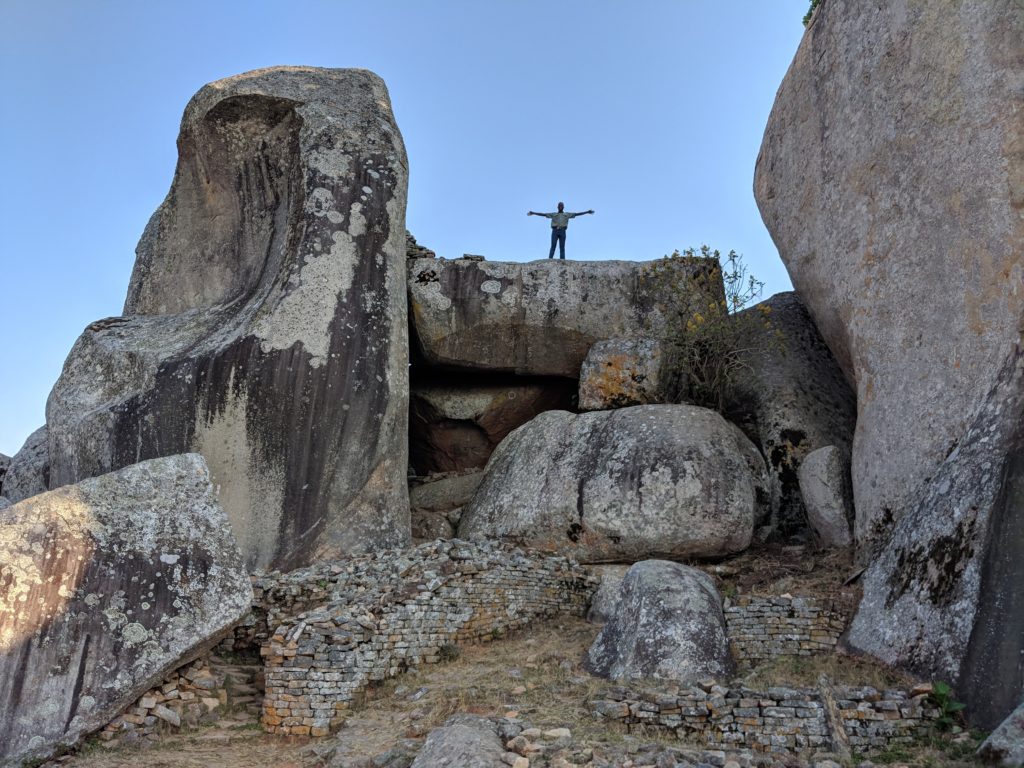
The ruins of the ‘Great House of Stone’, undoubtedly one of the most striking and intriguing historical sites in sub-Saharan Africa, spreads across a scenic valley of grassland in central Zimbabwe.This visit to the remarkable UNESCO world heritage site began in the capital of Harare, several hours from Great Zimbabwe, fortified by an amazing T-bone from the Rainbow Towers Hotel. Even the most resilient African traveler will find this drive to the site a tiring journey, although those who opt for this route can stop overnight in accommodation en route and pass through beautiful landscapes. The tarmac roads for the vast majority of the drive were well maintained and few vehicles were encountered as our transport passed through farmland, bush, woodland and small settlements. Visitors, however, have other options for reaching the site with those from Southern Africa using routes from the Limpopo river side of the region.
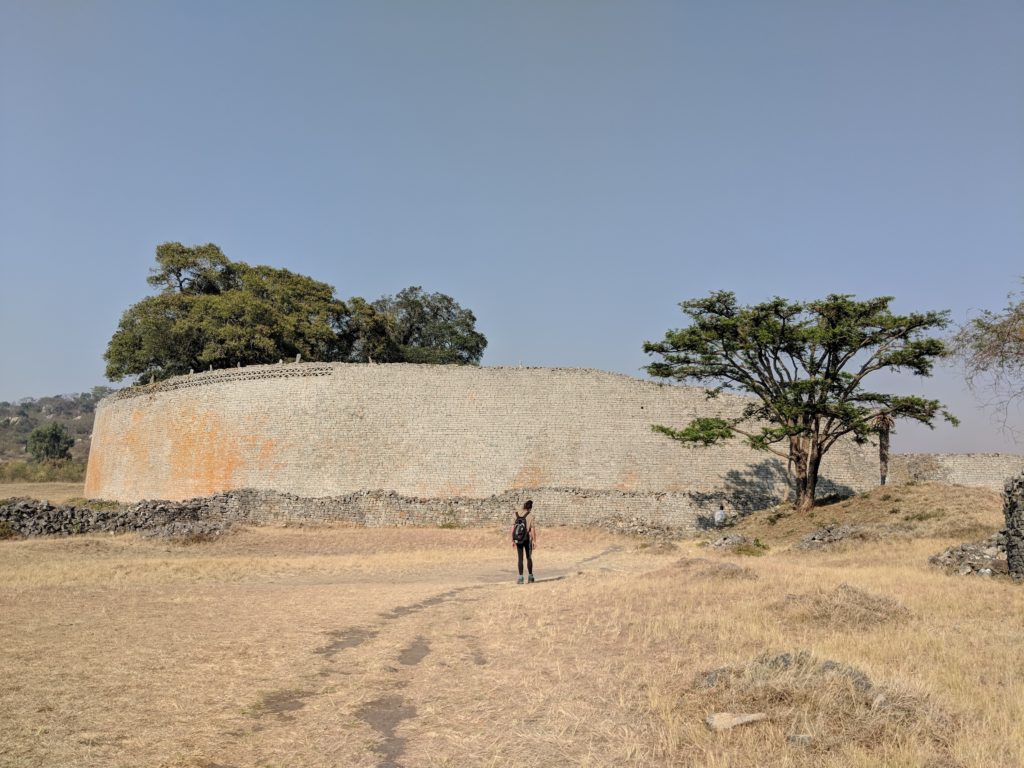
The Lodge at the Ancient City was the ideal hotel with truly ‘distinctive accommodation’ just a few minutes from Great Zimbabwe National Monument. Each guest gets to stay in their own stone ‘royal dwelling’ inspired by the surrounding heritage site in tranquil surroundings with water buck and impala delightfully grazing around the pathways that weave through the vegetation surrounding the thatched cottages. The hotel has a really distinctive design characterised by the use of local stone and huge thatch roofs while the site has magnificent views to the rear.
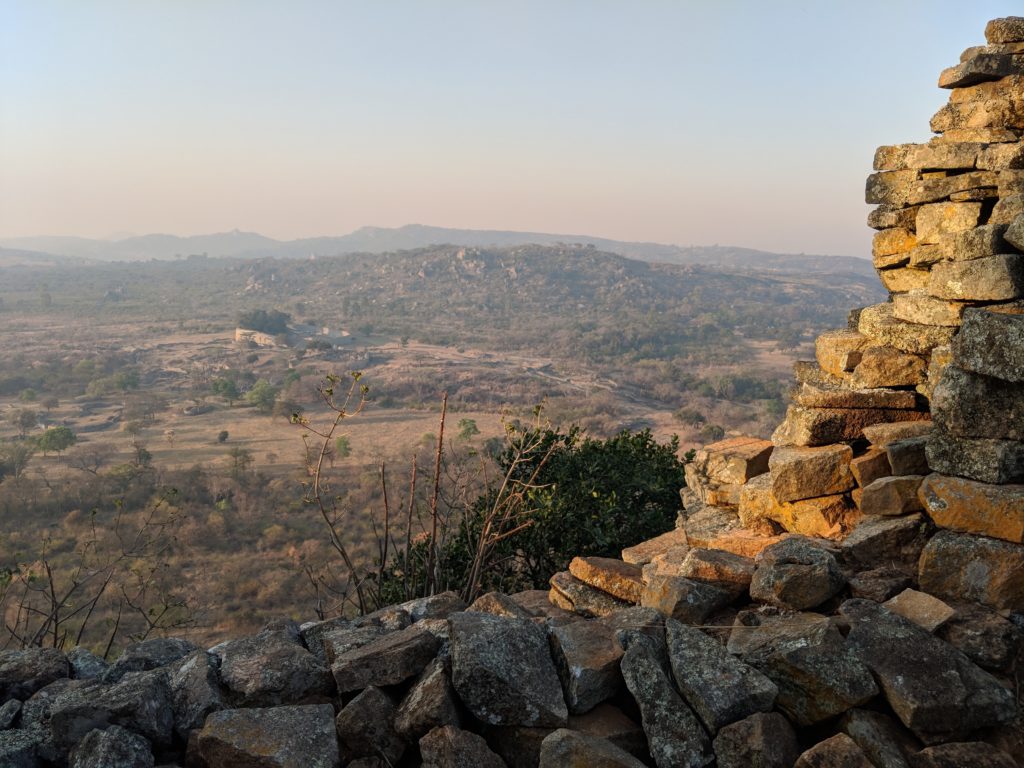
Heading out to the official entrance gate to the historical site just before dawn ensures that one could enjoy the whole site alone while also being able to comfortably walk around before the temperature rises in the hotter months. Tuesday and Thursday are apparently the most popular days for visiting while well-behaved school parties can be found arriving later in the morning.
Gift, our athletic and enthusiastic guide, started the tour at the gate with a brief introduction to the site: “Great Zimbabwe was a political, cultural and economic centre. This is an archaeological site that brings many questions!” During the tour he went on to discuss the different views about the origins, purpose and decline of this phenomenon described by UNESCO as ‘a unique testimony to the Bantu civilisation of the Shona [people] between the 11th and 15th centuries’.
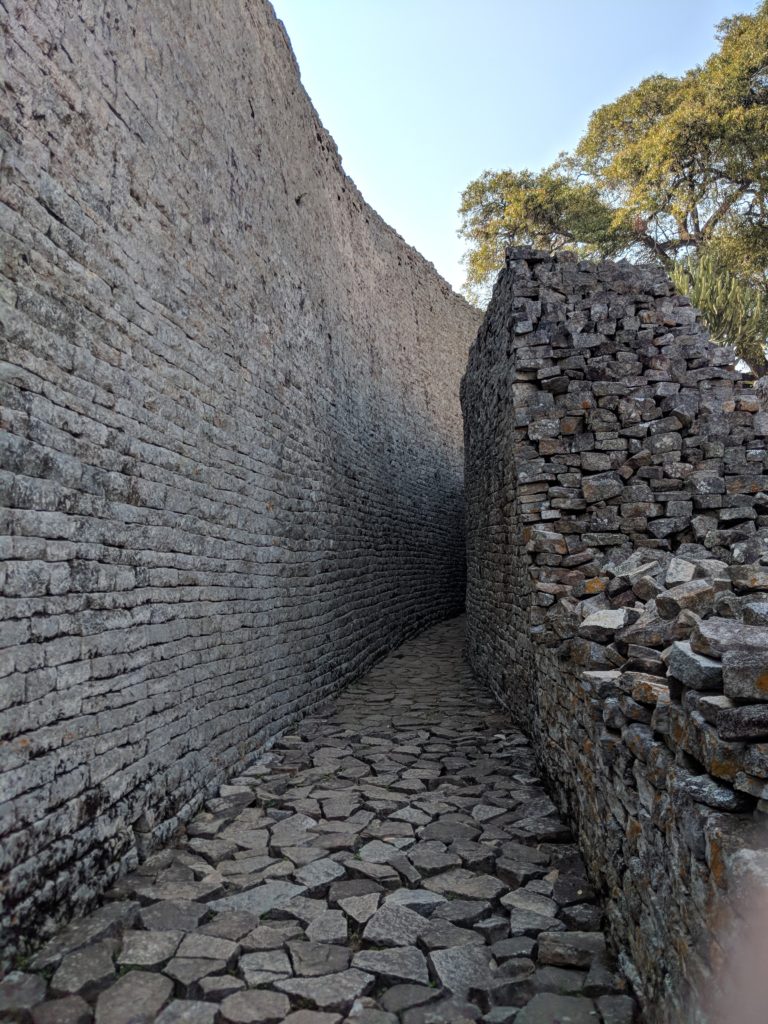
A 20-minute strenuous hike up steep irregular stone steps rewards the visitor with incredible views from the Hill Ruins formed from thousands of rough granite stone blocks. The journey up offers a first-hand experience of how well the defences of this important settlement were constructed. Both the gradient and the narrow paths need to be navigated with care. Gift, however, happily seemed to bounce across the steep rock faces and stone walls of this once royal dwelling place. The artifacts, left by the inhabitants, that were not taken or lost over the centuries indicate that the occupants of the stone settlement had extensive trading links.
It was especially interesting to stand at the entrance to one of Great Zimbabwe’s cave entrances that were used as a highly effective communication system. Gift demonstrated how a series of calls and whistles could echo around the mouth of the cave and across the valley. This highly effective art of communication still works in 21st century Zimbabwe with Gift’s call eliciting a response from a local across the valley!
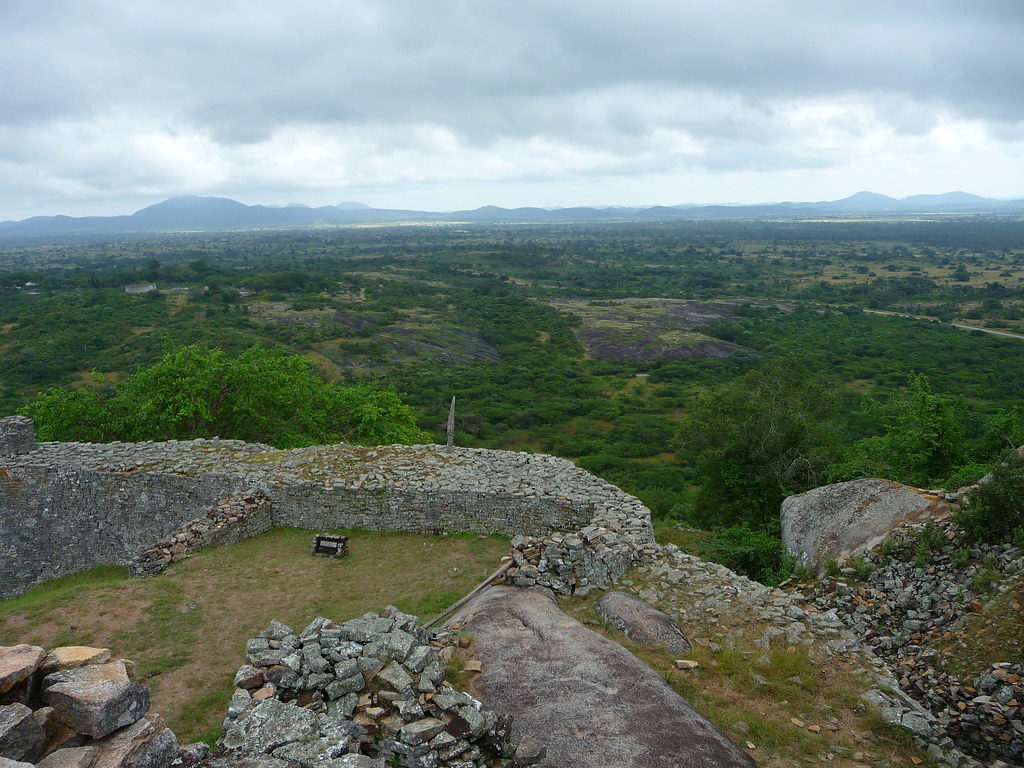
The Great Enclosure, dating to the 14th century, consists of finely formed granite blocks, living quarters, communal areas, an intriguing conical tower and narrow passages that weave their way around the largest ancient monument in Africa south of the Sahara desert. It was a phenomenal sight to behold.
Scattered further are the Valley Ruins that have evidence of settlements over many generations although it appears by 1450 this remarkable complex had been largely abandoned. Its wealth and influence suddenly dissolved. According to Gift our guide, inheritance disputes, internal fighting, environmental stress, water shortages, declining land for grazing and disease may all have played a part in the decline of this once dynamic centre of Bantu civilization.
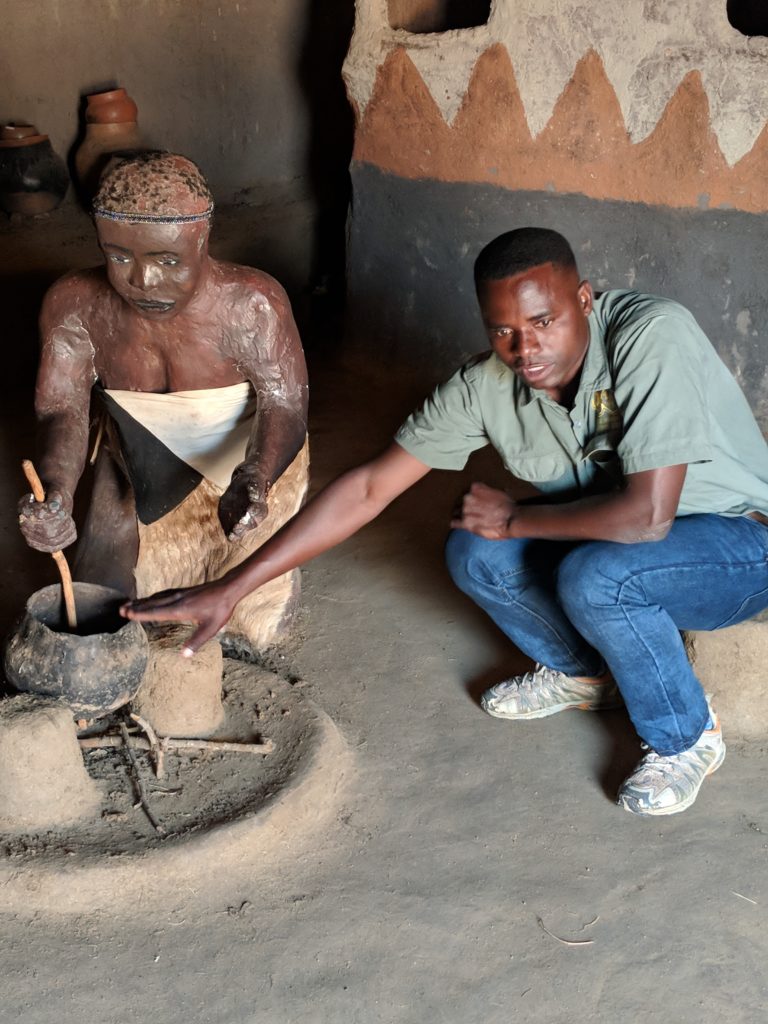
Great Zimbabwe covers an area of 800 ha, sharing the land with the present-day Shona residents of the valley. Gift offered a fascinating insight into the traditions and history of this tribe by walking us through ancient ruins, aloe vera trees and grazing cattle to a reconstruction of a traditional village of thatch-roofed huts. Upon entering each hut, he explained its purpose ranging from the accommodation for male youth responsible for cattle guarding to the ‘First Wife’s Kitchen’ of a polyamorous homestead. Finally, local villagers shared some traditional dancing, singing and music making with instruments (including a thumb piano and kudu horn) that may have been familiar to the original Great Zimbabwe occupants.
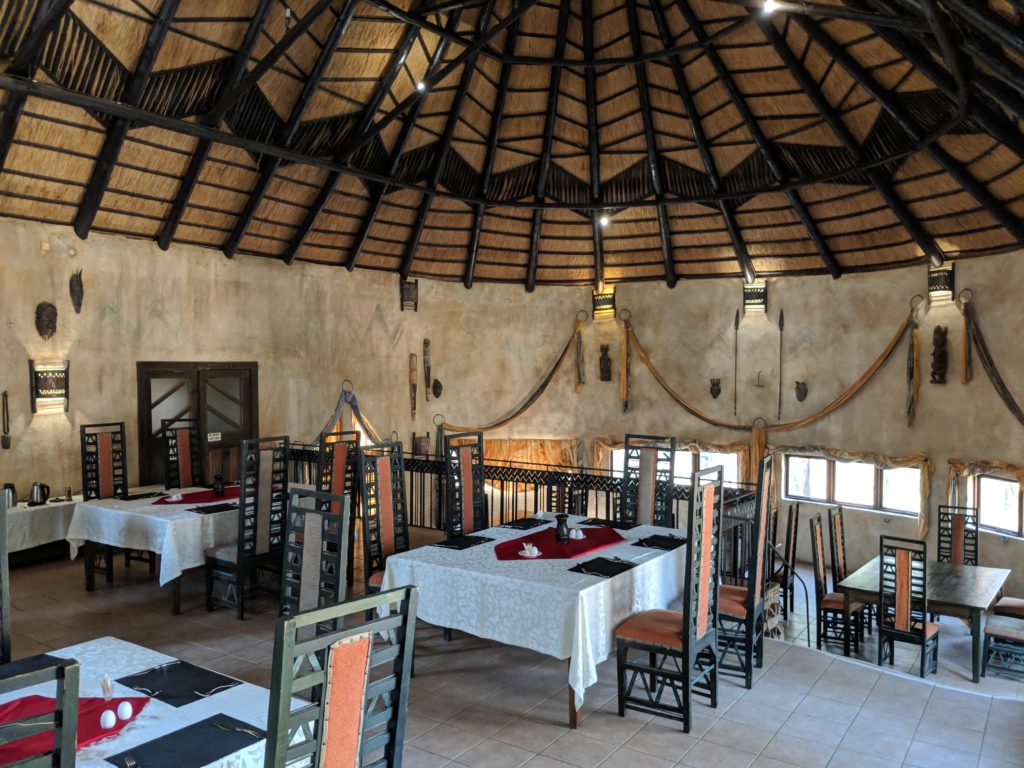
Great Zimbabwe is ‘unique’ in terms of African architecture, it offers a priceless insight into the lost civilisation of the Shona kingdom that flourished from the 11th to the 15th centuries. The magnificent ruins have fascinated visitors for hundreds of years. Its enduring legacy is the country of Zimbabwe named after the striking stone settlement together with the steatite bird, the ancient royal totem, that appears on the flag of the country. Any visitor to Great Zimbabwe will be rewarded with an opportunity to immerse themselves into one of Africa’s greatest historical sites while also enjoying the beauty and tranquillity of the surrounding terrain.
Health and safety: please consult your tour operator about the suitability of the site for you or your fellow travellers.
Rwandair fly three times a week from London Gatwick to Harare via Kigali.











One Response to Great Zimbabwe: Africa’s Stone Mystery